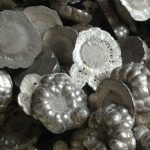Notice: Undefined index: sith_hide_share in /www/sites/alloy.wiki/index/wp-content/themes/likegoogle/single.php on line 32
Deprecated: get_settings is deprecated since version 2.1.0! Use get_option() instead. in /www/sites/alloy.wiki/index/wp-includes/functions.php on line 4862
Ti-6al-4v alloy has 6% aluminum and 4% vanadium, which is the largest in both domestic and foreign countries. In recent years, some major developed countries have also imported this titanium alloy plate from China. With the development of China's aerospace industry, not only the use of ti-6al-4v titanium alloy has increased significantly, but also its quality requirements have become more stringent. Exports to European and American countries must comply with the following four standards: mil-t-9046j, AMS4911H, ASTMB265, and DMS1592F. In order to make the product quality fully meet the "four-in-one" standard and meet the requirements of export and the increasing development of aerospace materials in China, cladding rolling has become the main process for the production of ti-6al-4v thin plates. The researchers conducted a series of experiments on this type of rolling process to find the best rolling process, mainly studying the effects of treatment with or without treatment, and treatment with different deformation amounts on the microstructure and performance of ti-6al-4v sheet (the thickness of the finished product was 1.0mm).

The ingot of the alloy was smelted by vacuum consumable arc furnace and then forged into slab by 3150t hydraulic press. The plate production through the resistance heating furnace, 1200mm four high reversible hot mill. Test scheme:
(1) plate for the treatment;
(2) the plate did not carry out;
(3) different deformation 75%, 85%, 90% of the treatment.
The properties and microstructure of different processes were studied. Effect of treatment on finished product performance and microstructure under different deformation. The test results show that:
(1) if the ti-6al-4v alloy thin plate is produced by cladding rolling, it must be treated with wire, which can reduce phase segregation and is conducive to the improvement of surface quality, internal structure and performance. Because in the test found that no treatment of the plate easy to produce bright areas, and this abnormal organization only by heat treatment is not able to eliminate, only through the treatment, can eliminate such bright areas, white spots and other abnormal phenomena.
(2) after treatment, although the massive solid phase was all transformed into acicular martensite structure, the material was easy to be processed and broken to form fine and uniform tissue, after treatment, the film tissue could be well broken only under the condition of sufficient deformation of the material. However, if the processing amount is too large, the new processing texture is strengthened, but too small and cannot further improve the processed tissue, the long stripe pattern phase in the tissue is still obvious, and the inner stripe pattern phase is still difficult to be broken and eliminated, resulting in the microstructure of the final product still has the locally grown thick slice tissue — the elongated stripe phase. Therefore, the total deformation amount from treatment to finished product should be controlled between 85 ~ 90%.
Guest contributors are welcome at the Alloy Wiki.It is a weekly wiki and guide on alloy information and processing technology, while also about the vast array of opportunities that are present in manufacturing. Our team of writers consists of a Machining Material Supplier / Machinist / Tool and Die Maker, a Biomedical Engineer / Product Development Engineer, a Job Development Coordinator / Adjunct Professor, and a President and CEO of a manufacturing facility.
Link to this article:Effect of β treatment on properties of TC4 sheet
Reprint Statement: If there are no special instructions, all articles on this site are original. Please indicate the source for reprinting:Alloy Wiki,thanks!^^


